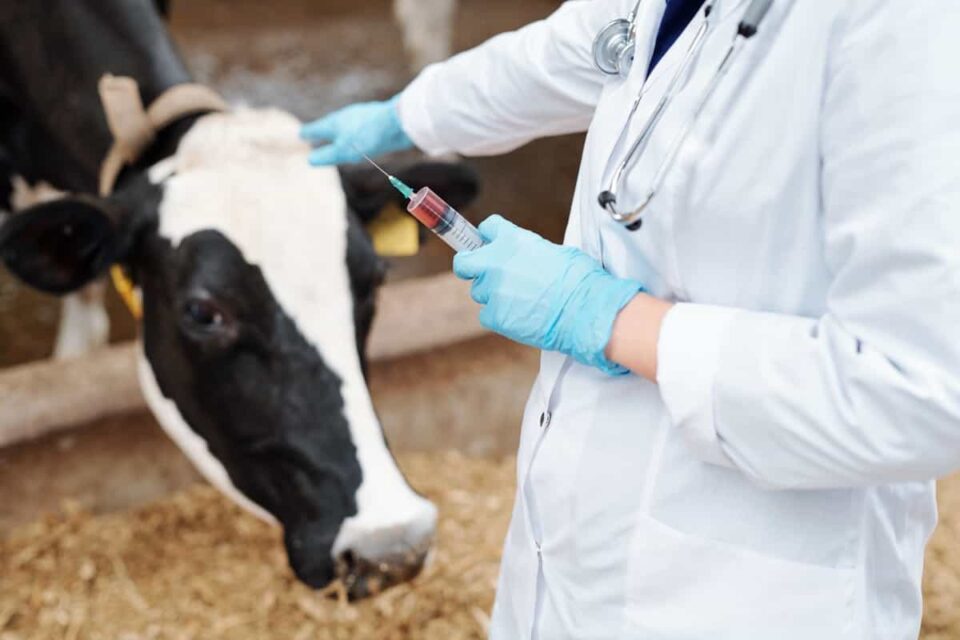Taita Taveta County in Kenya is pioneering a transformative livestock initiative that combines cutting-edge genetics and breeding practices with digital veterinary services to strengthen the country’s dairy value chain. Through the National Agricultural Value Chain Development Project (NAVCDP), the county has launched a digital vaccination campaign that not only combats livestock diseases but also lays the foundation for improved genetic selection and herd productivity.
At the heart of this campaign is the strategic application of genetics and animal health management, designed to help farmers build more resilient, high-yielding herds. By reducing disease burden through timely vaccinations, the programme creates the conditions necessary for targeted breeding and genetic improvement—key to achieving long-term productivity gains in Kenya’s dairy sector.
The programme uses a digital e-voucher system that integrates veterinary services with broader herd improvement strategies. Farmers are connected to veterinary experts, vaccine suppliers, and breeding advisors via a central platform that includes private sector partners such as Safaricom and Mifugo 360. This structure allows for real-time tracking of animal health and productivity, enabling data-driven genetic selection across herds.
Katuu Mzenge, County Executive Committee Member for Agriculture, Livestock, Irrigation, and Cooperative Development, emphasized the role of genetics in modern livestock development. “This isn’t just a vaccination campaign—it’s a long-term investment in the genetic potential of our livestock. Healthy animals are productive animals, and now we can breed for both resilience and yield,” he said.
Chief Livestock Officer Habibu Mruttu welcomed the integration of biosecurity and breeding objectives. “With healthier livestock, we can finally implement systematic breeding programmes at scale, ensuring traits like milk yield, disease resistance, and feed efficiency are passed on to future generations.”
In line with Kenya’s Bottom-Up Economic Transformation Agenda (BETA), Chief Agriculture Officer Mcharo Mwalugha urged all wards to mobilize cooperative societies not only to facilitate vaccinations but to play a role in community-based breeding programs that will elevate local dairy genetics over time.
NAVCDP County Coordinator Andrew Mbinga stressed the programme’s broader goals, highlighting how improved animal health and genetics lead to economic resilience. “This initiative helps farmers move away from short-term solutions and adopt systems that are sustainable and science-backed. Better genetics mean better income, better nutrition, and stronger rural economies,” he noted.
To ensure local participation and impact, ward-level committees composed of government officers, cooperative leaders, and stakeholders are managing the rollout. This structure supports localised data collection, which will be used to guide breeding decisions, track genetic progress, and optimize productivity at the farm level.
Through the digital voucher system, farmers receive subsidised or free veterinary services in a transparent and traceable manner. This facilitates disease control, improves record-keeping, and supports breeding efforts by ensuring healthier parent stock for future generations.
The programme also leverages smart livestock tracking, vaccine cold-chain systems, and farmer education initiatives to create a robust environment for genetic advancement. Partnerships with Safaricom and Mifugo 360 streamline coordination, from vaccine delivery to health monitoring and genetic performance tracking.
Backed by NAVCDP, a national initiative focused on value-chain development in dairy, horticulture, and cereals, this integrated approach is positioning Taita Taveta County as a leader in genetic improvement and digital innovation in livestock production.
As the campaign gains traction, farmers are expected to see improved herd fertility, reduced mortality, higher milk yields, and stronger offspring. These gains underscore the vital role of genetics and biosecurity in transforming smallholder dairy farming into a more competitive and sustainable enterprise.
With digital tools enabling precision breeding and targeted disease control, the future of dairy farming in Taita Taveta County—and Kenya at large—promises to be more productive, genetically robust, and economically inclusive.



